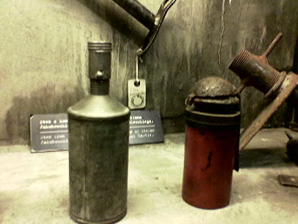Partial list of the weapons captured after the uprising was suppressed:
- 7 Polish Rifles
- 1 Russian Rifle
- 1 German Rifle
- 59 pistols of various calibers
- Several hundred hand grenades, including Polish and home-made ones .
- Several hundred incendiary bottles
- Home-made explosives
- Infernal machines with fuses
- A large amount of explosives, ammunition for weapons of all calibers, including some machine-gun ammunition.
What follows is a brief description of some of the homemade weapons used in the Warsaw Ghetto uprising. Truly Impressive.

